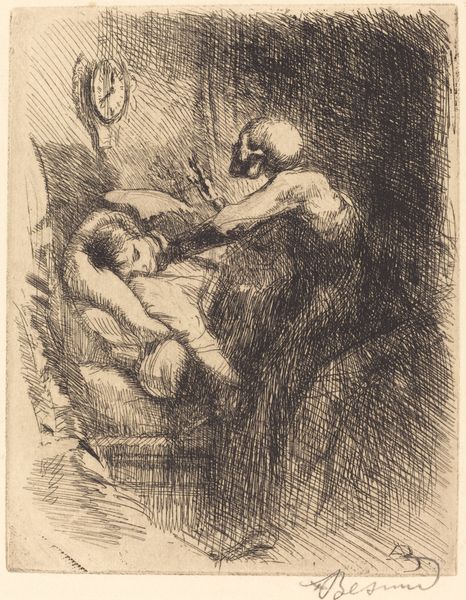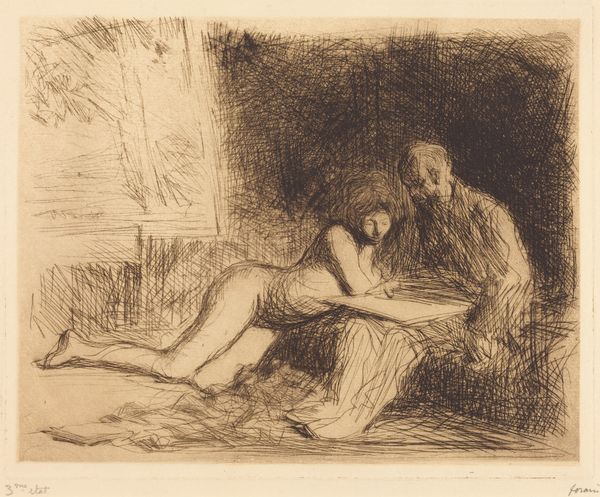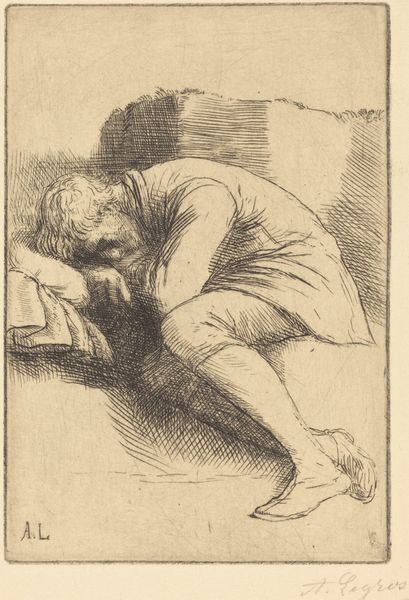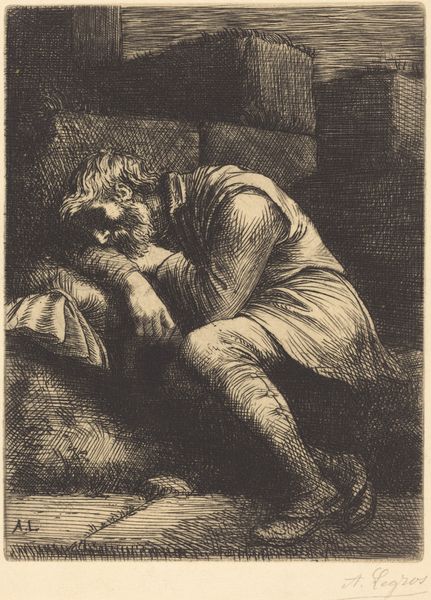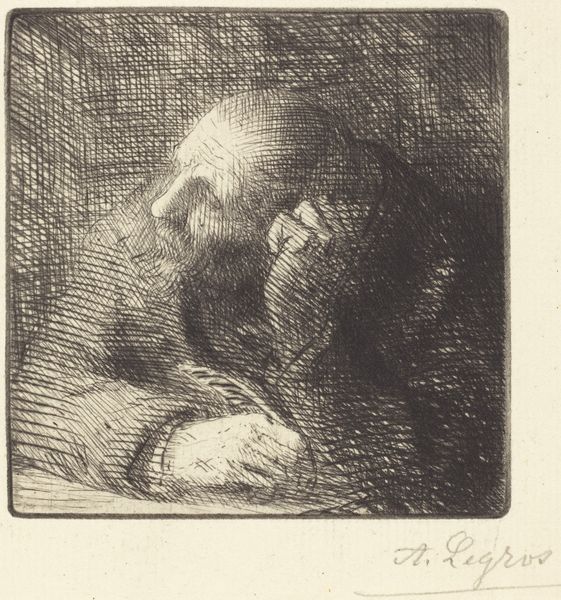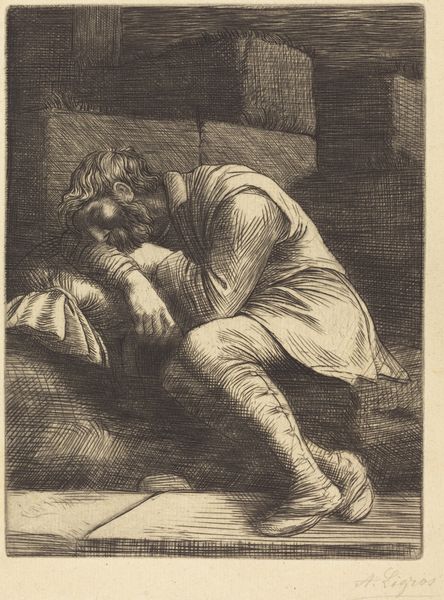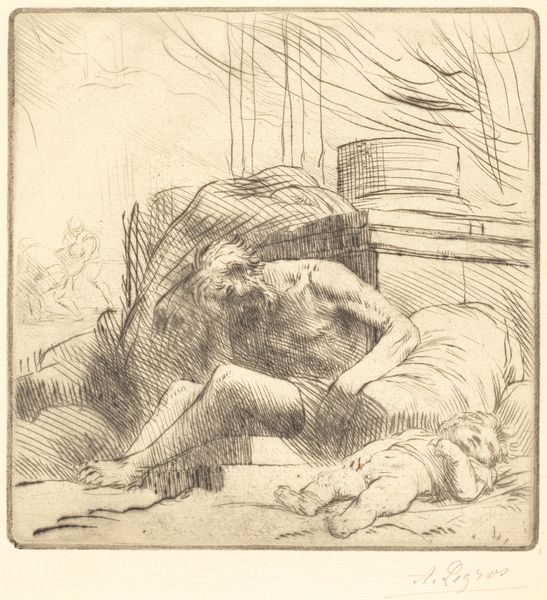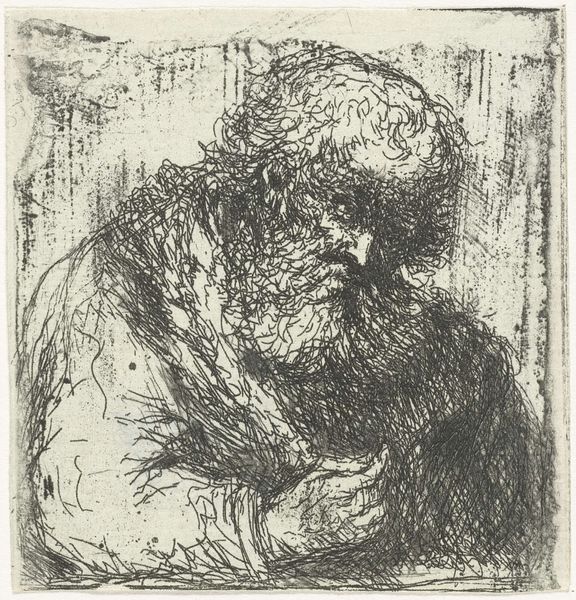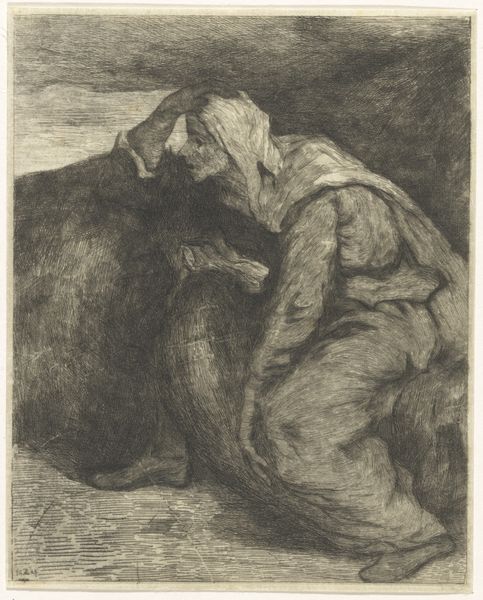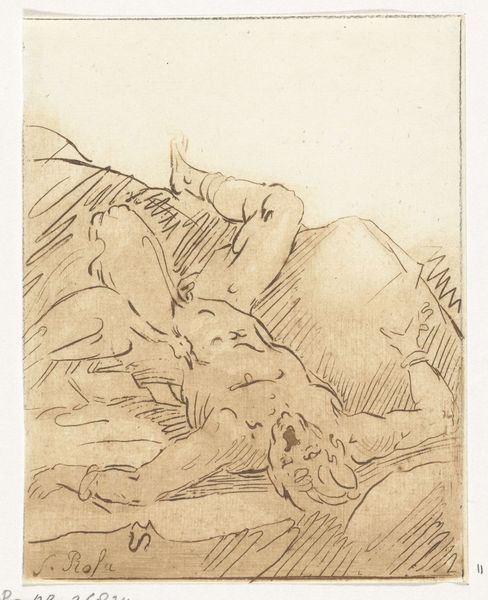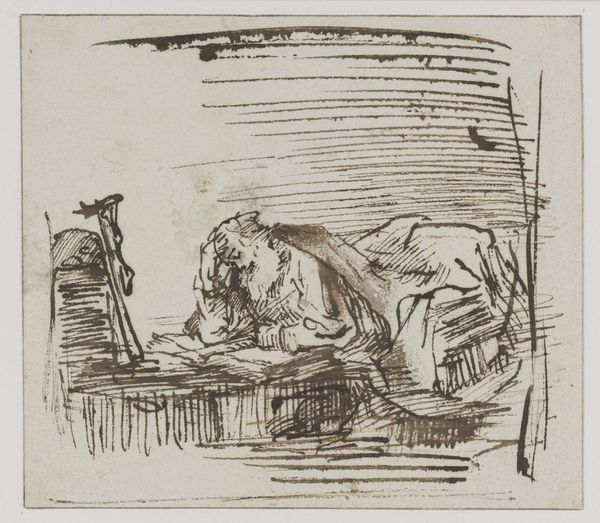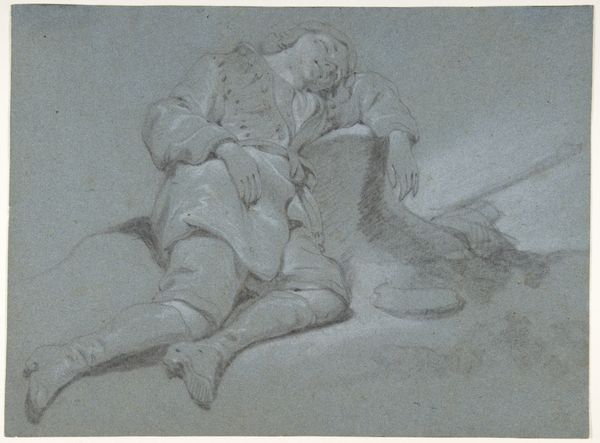
print, etching
#
portrait
# print
#
etching
#
genre-painting
#
realism
Copyright: National Gallery of Art: CC0 1.0
Curator: Immediately, a sense of quiet desolation emanates from this etching. The cross-hatching creates a dense shadow, almost suffocating the figure. Editor: This is Alphonse Legros' "Sleeping Beggar," rendered through the intricate process of etching. It's interesting to observe how this particular medium allowed Legros to portray what appears to be raw humanity. The print itself enters into a larger conversation on poverty in nineteenth century France. Curator: The material aspect is paramount here. Look at the layering of the ink, the controlled yet visibly labored marks that compose the old man’s ragged hair and clothing. It is a textured portrait, not so dissimilar to those seen of industrial workers at the time. Editor: Yes, the texture is central to understanding the image's reception within social dialogues around labor. It resonates with the realist movement's engagement with everyday subjects, particularly highlighting those marginalized by socio-economic structures. One could easily make the argument that, here, the institution of art sanctifies this kind of figure by including his likeness within a gallery context. Curator: I would counter that by mentioning Legros' interest in the processes, the work put into this etching mirrors the daily life of the beggar in the print itself. Editor: The visual weight of the lines contributes so much to this feeling. Did he print a series to then circulate the image? How did the original art market audience respond to the image? Curator: Well, in creating an etching, Legros made it possible to disseminate this image much easier than a painting for example. I feel we must look closely at these deliberate choices. How the making mirrors a narrative around social inequities and the role of material wealth in this context. Editor: I see now what the production process, and the distribution opportunities afford to artwork, says about access and viewership within society during the 1800s. Curator: Exactly! Editor: A valuable perspective. Curator: As is yours!
Comments
No comments
Be the first to comment and join the conversation on the ultimate creative platform.

